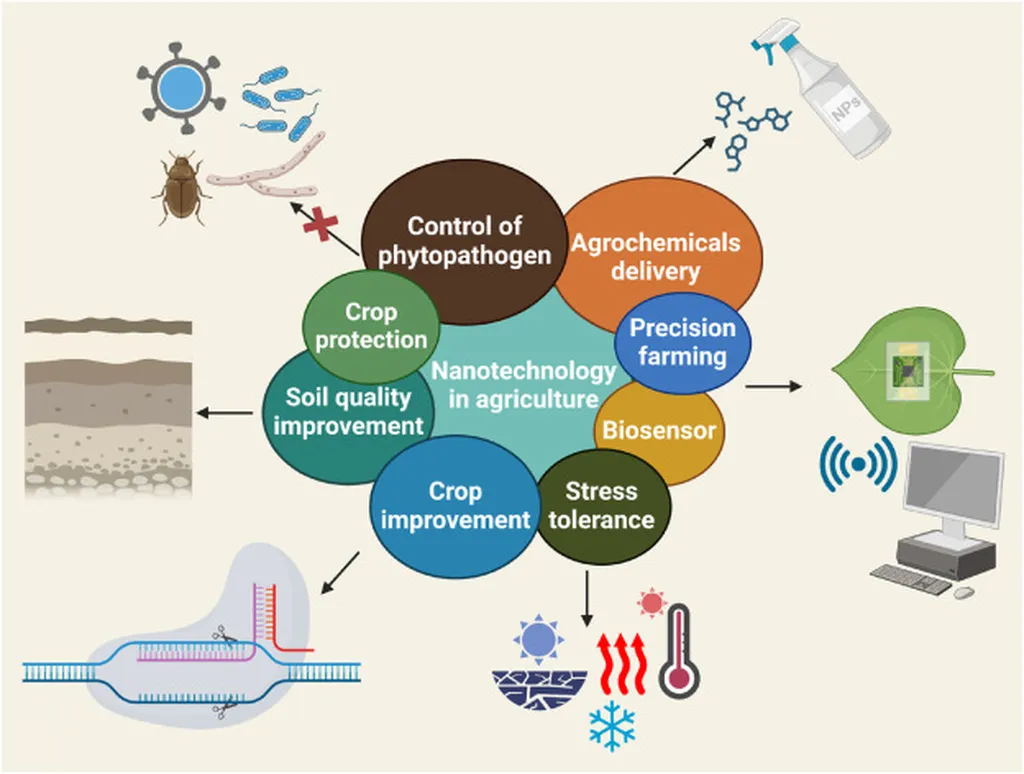In the face of escalating climate variability, agricultural systems worldwide are under immense pressure. The environmental shifts have intensified both abiotic and biotic stresses on plants, significantly curtailing growth and productivity. Amidst these challenges, a beacon of hope emerges from the realm of nanotechnology, offering innovative solutions to bolster crop resilience and yield. A recent review published in the journal *Plant Stress* (which translates to *Stress in Plants* in English) delves into the transformative potential of nanoparticles (NPs) in managing diverse stress conditions and modulating phytohormone signaling pathways.
The review, led by Vinay Kumar from the Department of Genetics and Plant Breeding at the MS Swaminathan School of Agriculture, Centurion University of Technology and Management in India, provides a comprehensive overview of nanoparticle synthesis methods, types, and characterization techniques. It emphasizes their potential in mitigating both abiotic and biotic stresses, which are critical for enhancing crop protection and productivity.
Nanoparticles, with their unique physicochemical properties, enable precise and targeted delivery of nutrients and protective agents. This precision can lead to improved crop quality and yield, even under adverse conditions. “Nanoparticles exhibit unique properties that allow for targeted delivery of nutrients and protective agents, thereby improving both the quality and yield of crops under diverse stress conditions,” Kumar explains.
The review also explores the role of NPs in plant pathology, particularly in disease detection and management. This aspect is crucial for developing effective strategies to combat plant diseases, which can devastate crops and lead to significant economic losses.
One of the most intriguing findings highlighted in the review is the impact of NPs on phytohormone signaling pathways. Phytohormones are crucial for regulating plant growth, development, and stress responses. Recent studies suggest that NPs can alleviate stress-induced damage in plants by modulating these pathways. However, the complex mechanisms underlying these interactions remain largely unexplored.
Kumar emphasizes the need for a deeper understanding of NP–phytohormone interactions. “A deeper understanding of NP–phytohormone interactions is crucial for developing safe and effective nanotechnological strategies to advance sustainable agriculture,” he states.
The implications of this research are far-reaching, particularly for the agricultural sector. By leveraging nanotechnology, farmers can enhance crop resilience, leading to higher yields and improved food security. Moreover, the targeted delivery of nutrients and protective agents can reduce the environmental impact of agriculture, promoting more sustainable practices.
As we grapple with the challenges posed by climate change, the insights provided by this review offer a glimmer of hope. By harnessing the power of nanotechnology, we can develop innovative solutions to bolster agricultural systems and ensure food security for future generations. The journey towards sustainable agriculture is fraught with challenges, but with the right tools and strategies, we can navigate this path successfully.
The review, published in *Plant Stress*, serves as a testament to the transformative potential of nanotechnology in agriculture. As we continue to explore the intricate interactions between NPs and phytohormone signaling pathways, we pave the way for a more resilient and sustainable future.

